- Home
- /
- Parco Mediceo di Pratolino
- /
- The Medici theatrical mechanisms...
Texts from:
TEATRO E SPETTACOLO NELLA FIRENZE DEI MEDICI
MODELLI DEI LUOGHI TEATRALI
by Elvira Garbero Zorzi e Mario Sperenzi
Ed. Leo S. Olschki – Firenze
Exibition site: le Scuderie
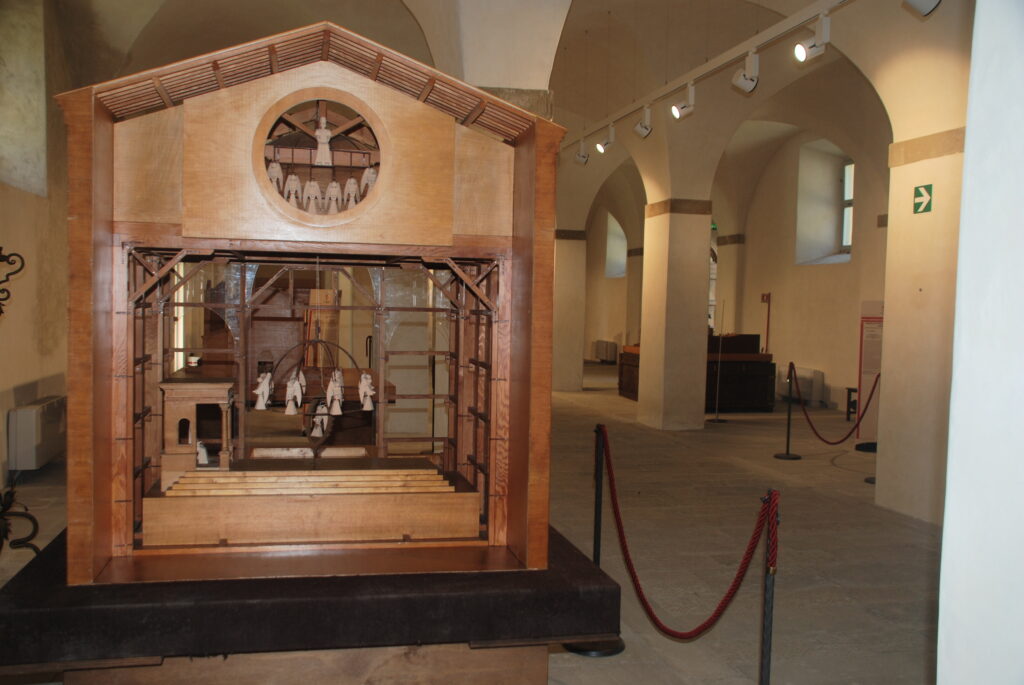
Scuderie: view of the hall on the ground floor 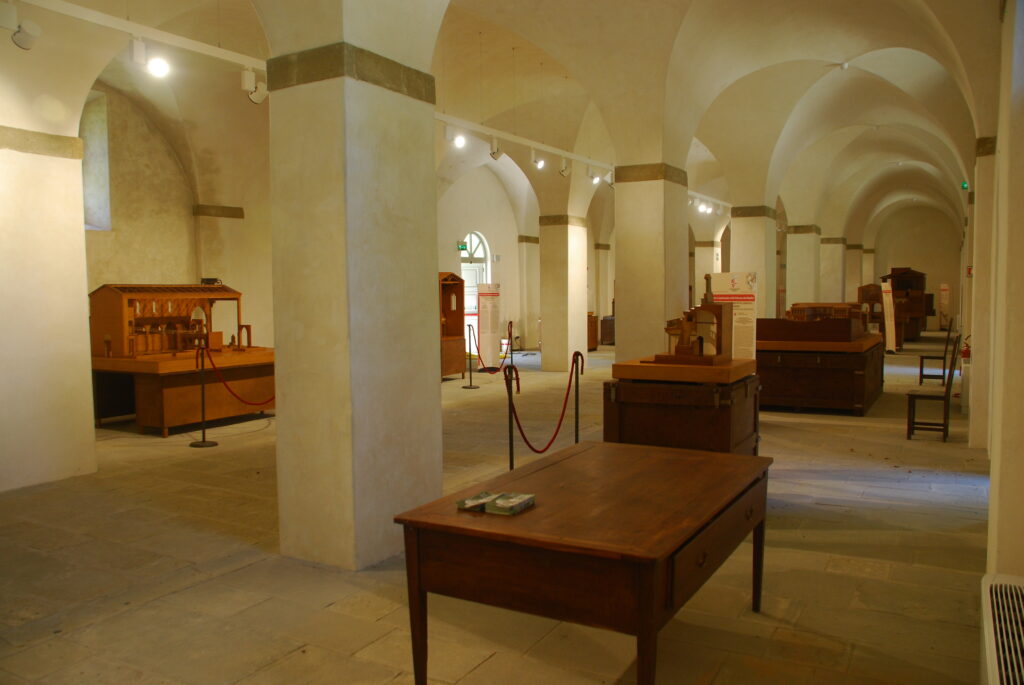
Veduta del salone al piano terra delle Scuderie
The Metropolitan City of Florence promotes an exhibition project in the evocative setting of the Medici stables in the Pratolino Park, presenting to the public the Models that recreate, based on ancient evidence, the “Theatrical Venues” that hosted some of the most famous theatre performances commissioned by the Medici family between the first half of the 15th century and the first half of the 17th century.
The defining of the theatrical venue was the subject of the previous exhibitions, coordinated by Prof. Ludovico Zorzi, at the time lecturer of History of Theatre at the faculty of Literature of the Florence University, who passed away in 1984.
The exhibitions were held in the monumental areas of Palazzo Medici Riccardi, respectively “The theatrical venue in Florence” in 1975 and in 1980 “The Prince’s scene” which gained particular attention across Europe, with the promotion by the Council of Europe both for the innovation from the point of view of the cultural approach, and for the beauty and wealth of the material on display.
In 1992 the event curated by Prof. Paola Ventrone, as part of the national celebrations for the 500th anniversary of Lorenzo de’ Medici’s death, was promoted by the then Province of Florence which sponsored, together with the Ludovico Zorzi Institute for performing arts, the exhibition «Le tems revient» – «’l tempo si rinuova» – Celebrations and shows in Lorenzo il Magnifico’s Florence, where the models of Santa Maria del Carmine and San Felice in Piazza were displayed.
Finally in 2001 “Theatre and Shows in Medici’s Florence”, this last exhibition was curated by Elvira Garbero Zorzi and Mario Sperenzi. The set-up takes the visitor inside a “stage machine”: in fact the Medici regarded shows as a means to arouse wonder and admiration in the foreign guests who time and again came to Florence on special occasions.
The spaces were not built specifically for performances, but specially adapted for occasional events: from the church to the palace hall, from the courtyard to the Boboli amphitheatre, to the first permanent theatres. Brunelleschi’s “ingegni”, that is the set of moving machinery that was used to illustrate with a visual image some religious mysteries, and Buontalenti’s machines, represent significant moments in the development of theatre architecture towards the form of modern theatre. A high technological standard was reached in order to create what we would today call “special effects”.
The exhibition starts with the reconstruction of three important Florentine churches: San Felice in Piazza, SS. Annunziata and Santa Maria del Carmine and continues with the stagings that were each time created in the various official homes of the Medici family: Palazzo Medici on Via Larga, Palazzo Vecchio and Palazzo Pitti, in the amphitheatre built in the park of the palace, that is in the Boboli garden. All these settings, including the first Florentine theatre buildings, the Teatro Mediceo degli Uffizi and the Teatrino della Baldracca, have been recreated according to evidences of the past. All credit for the projects and the first exhibition goes to architect Cesare Lisi (Drawings kept in the Archivio di Stato di Firenze) who based them on a historical reconstruction by Prof. Zorzi, who envisaged a trilogy dedicated to Music and Shows in Medici’s Florence.
Models
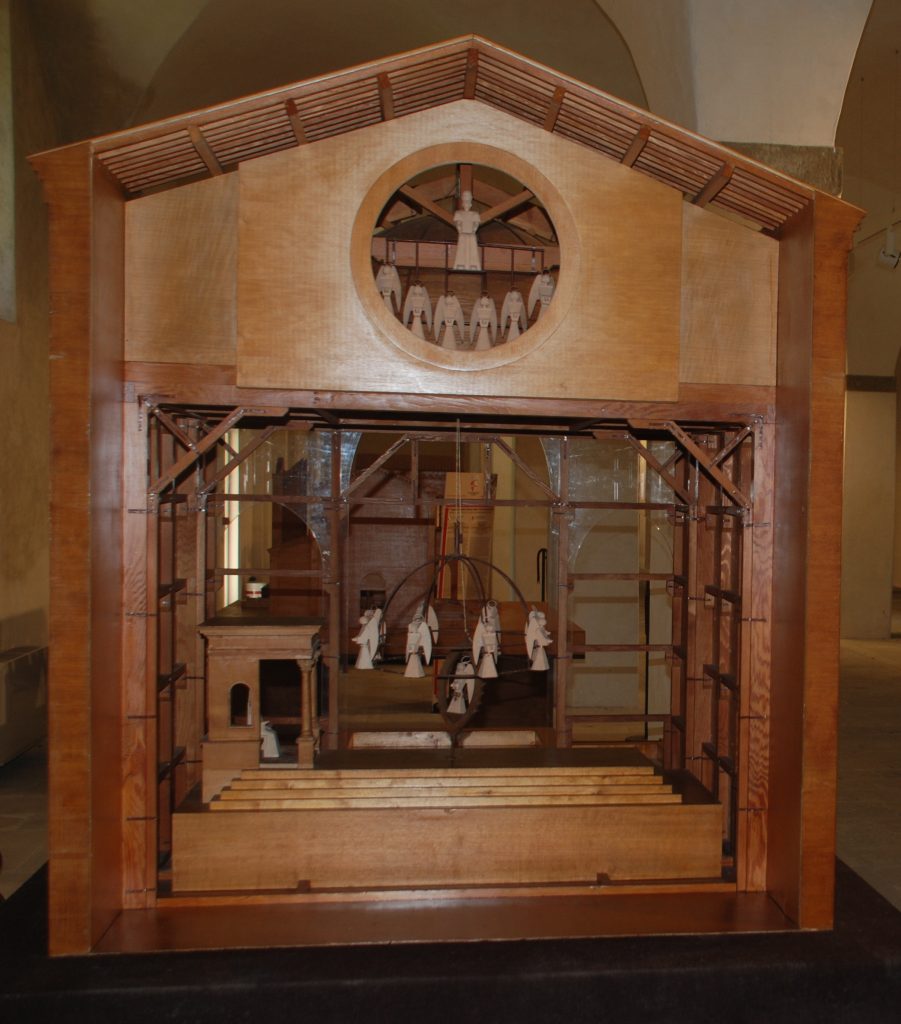
San Felice in Piazza 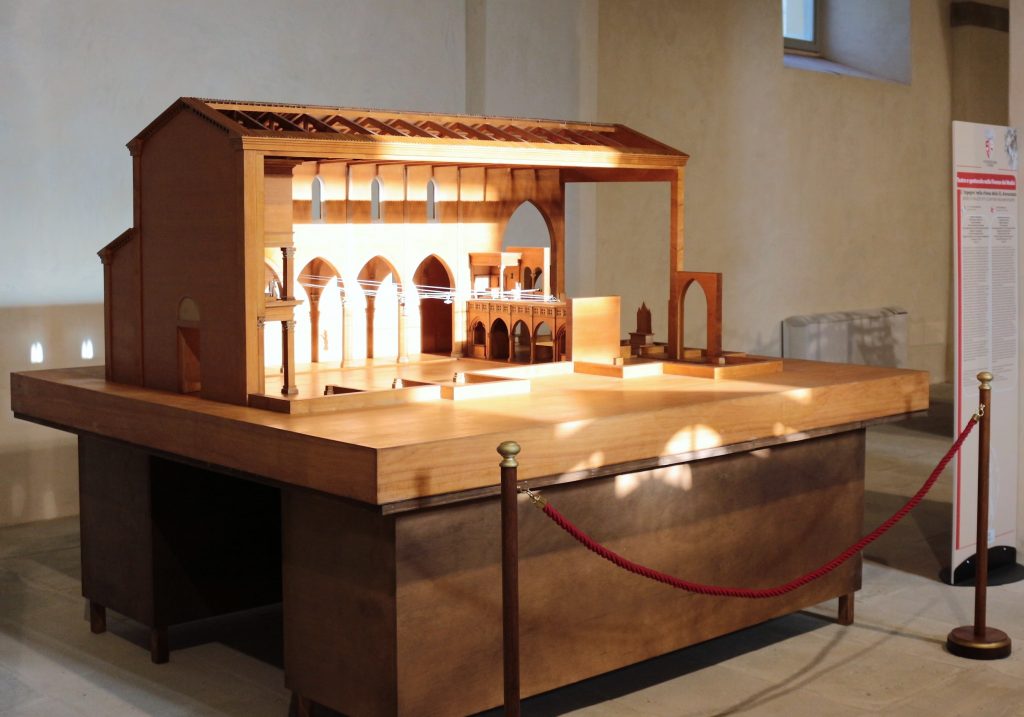
SS. Annunziata 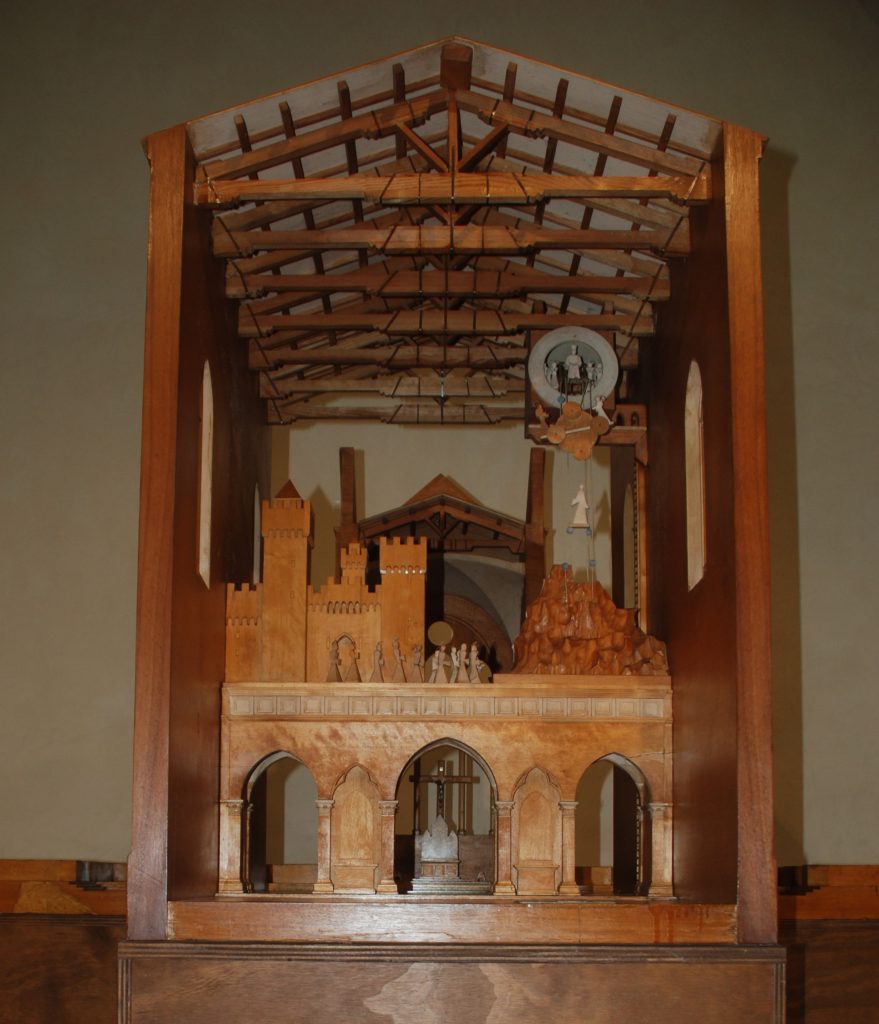
Santa Maria del Carmine 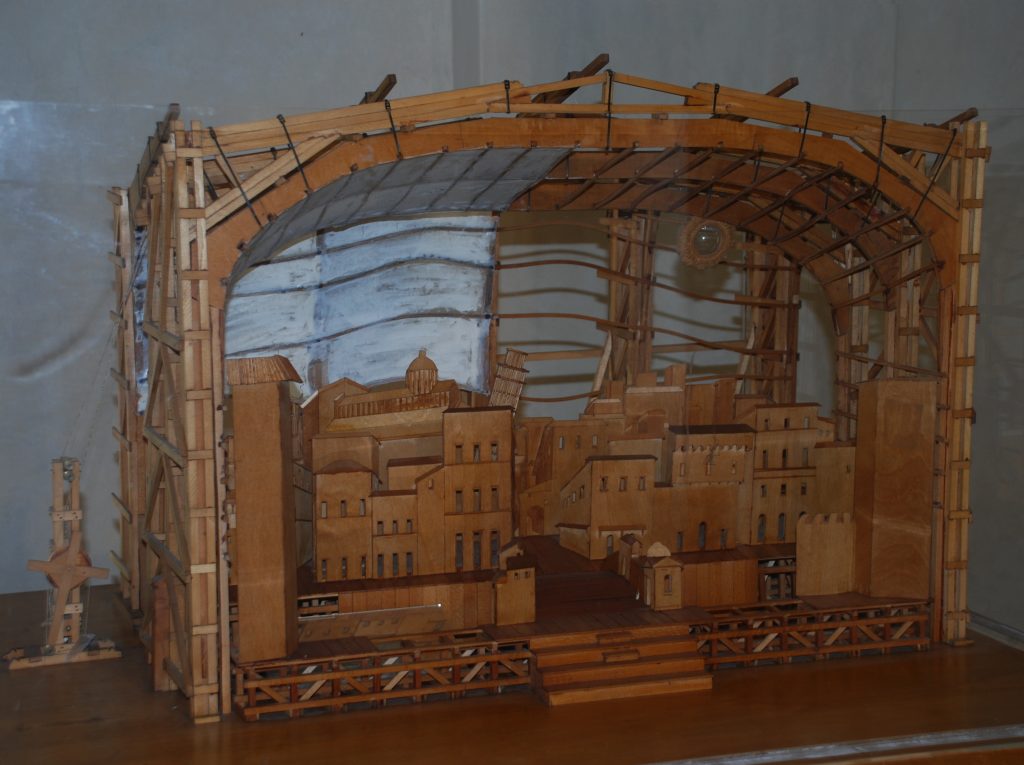
Palazzo Medici – The stage 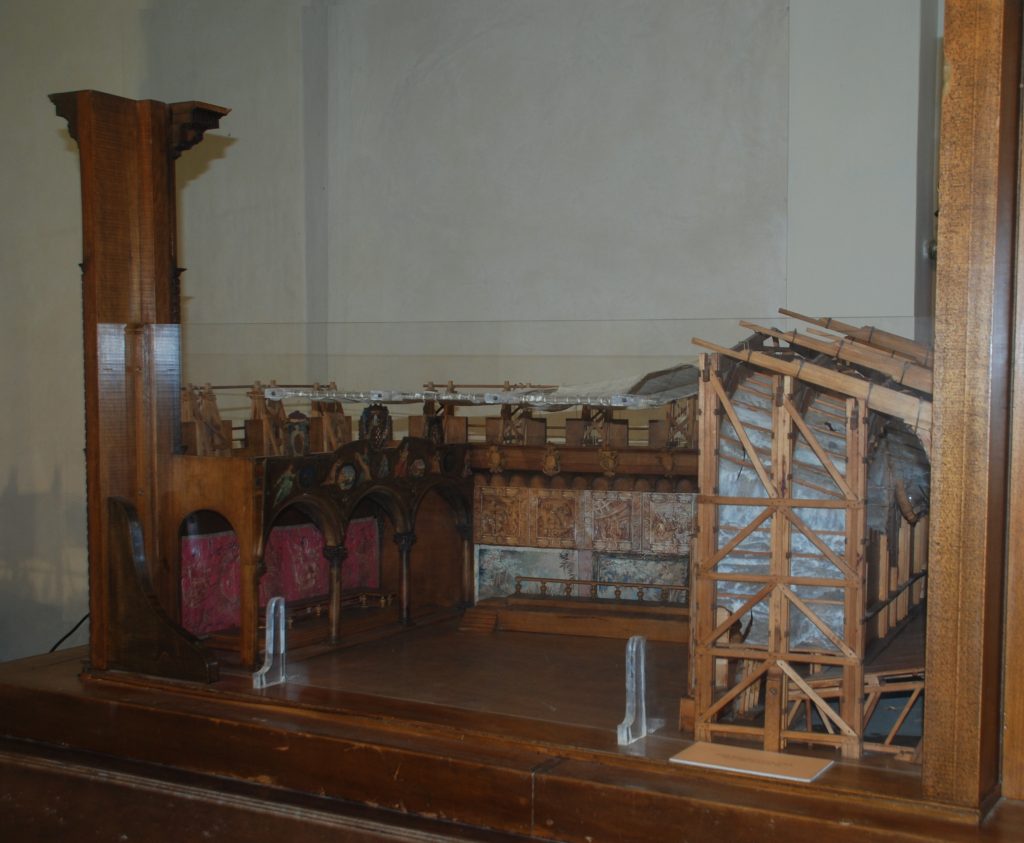
Palazzo Medici – The courtyard 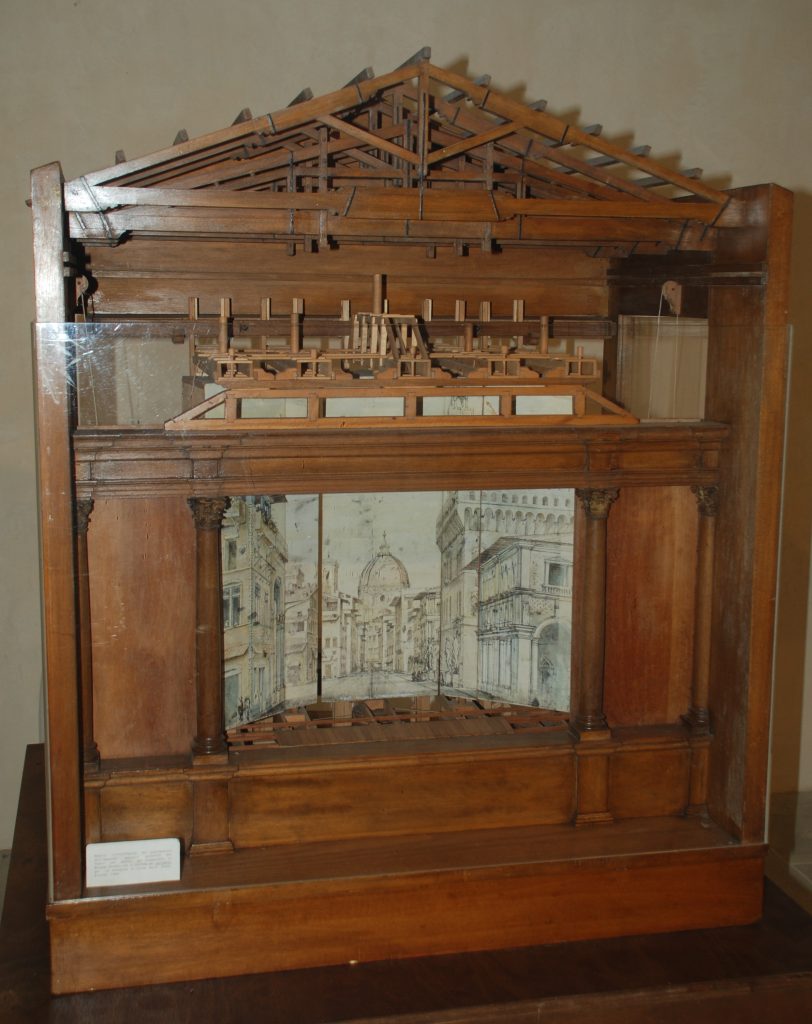
The stage – Salone dei Cinquecento 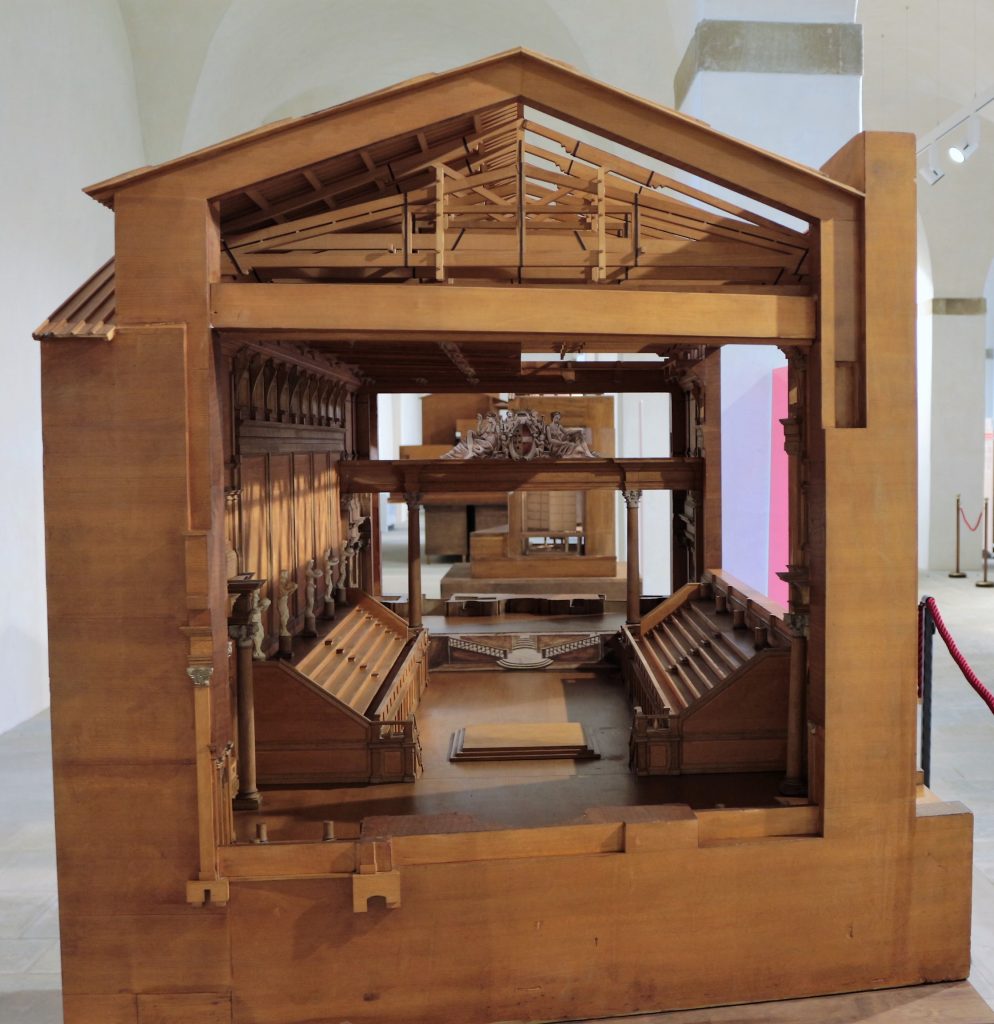
Theatrical apparatus – Salone dei Cinquecento 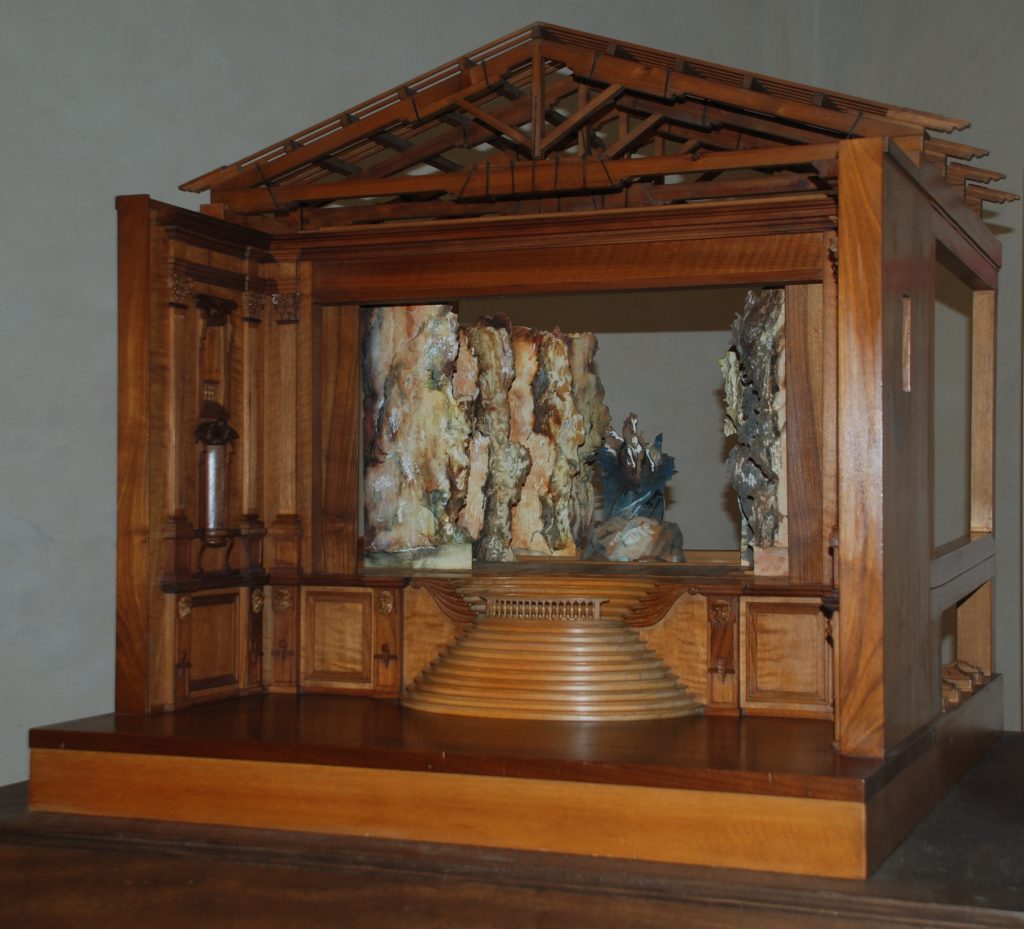
The stage – Uffizi 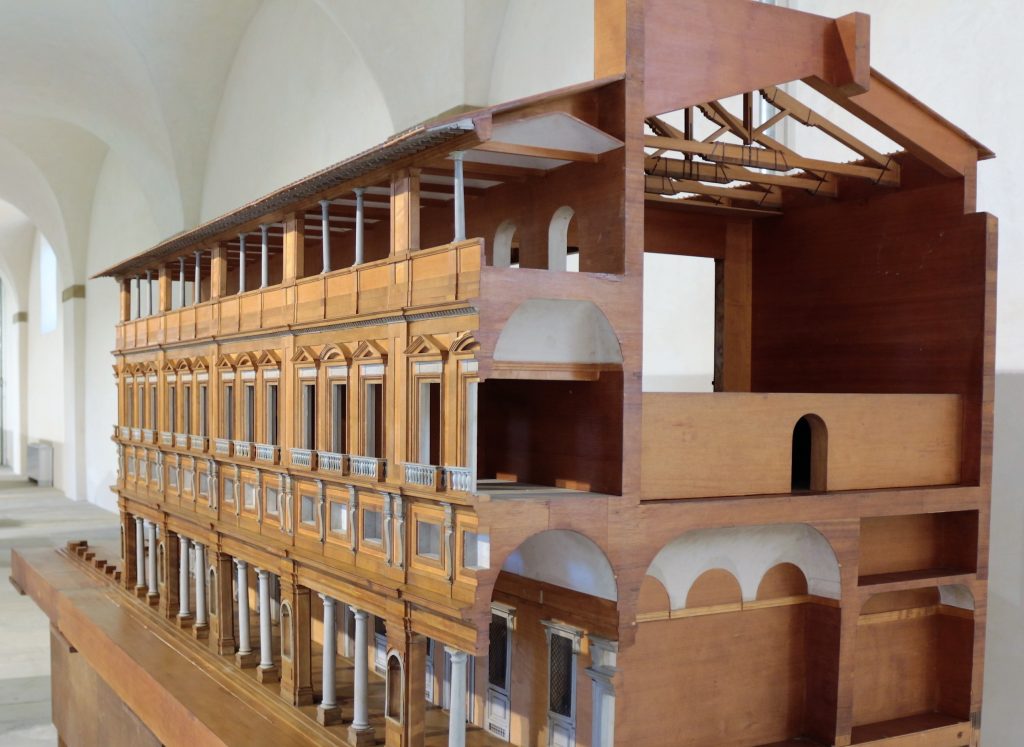
The Uffizi: Teatro Mediceo 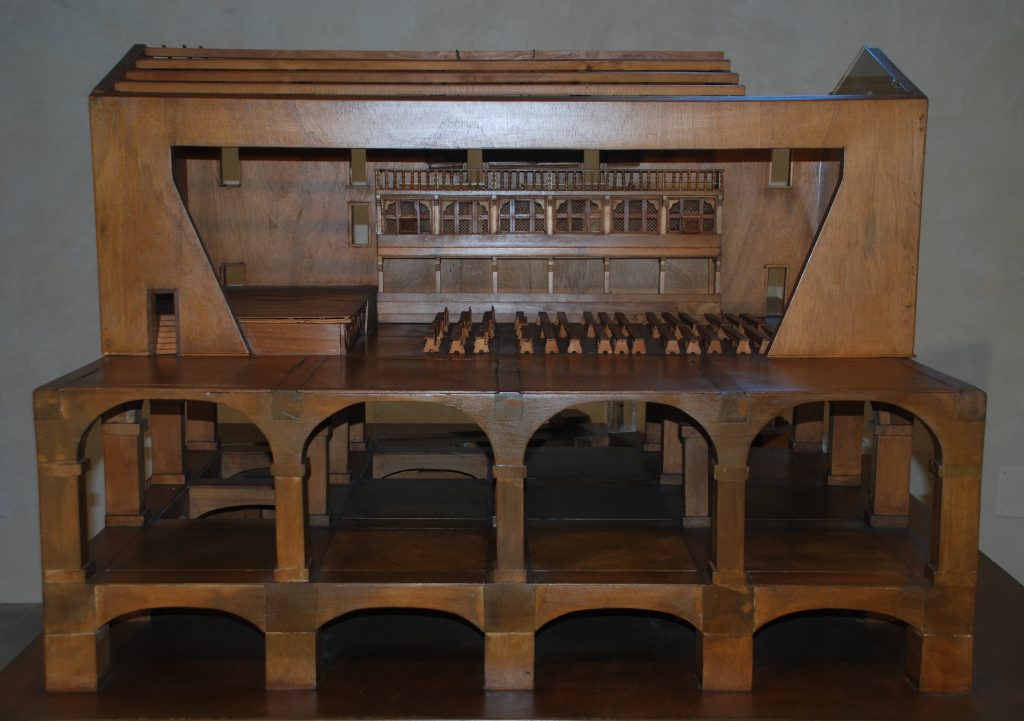
Il teatrino known as Dogana 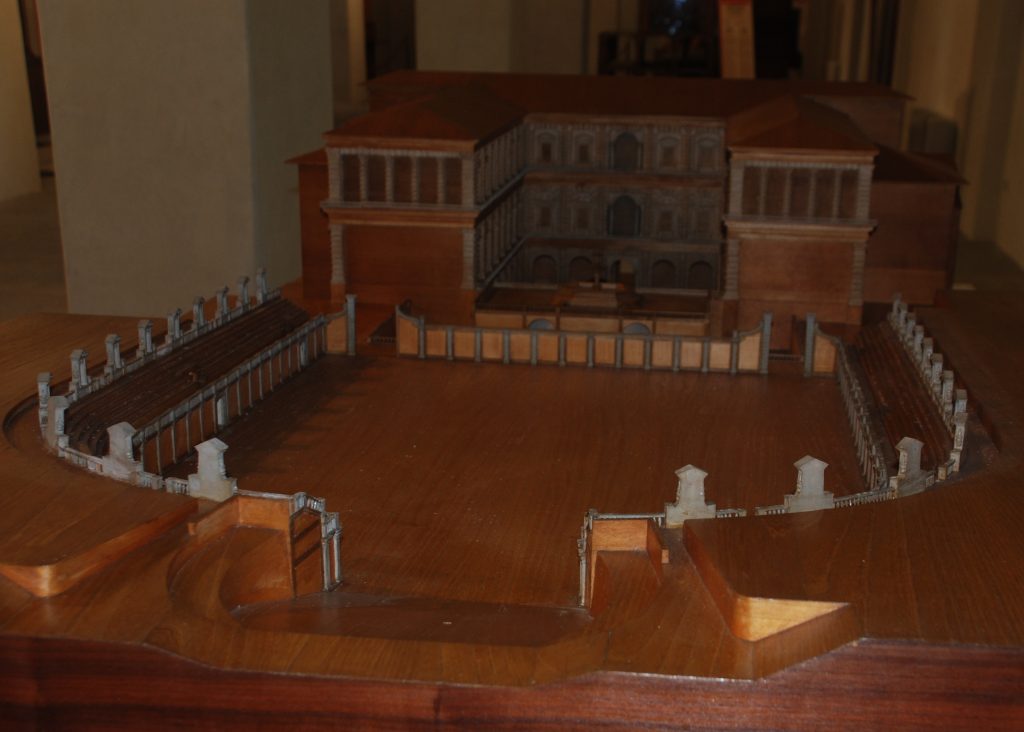
Palazzo Pitti – courtyard and amphitheatre 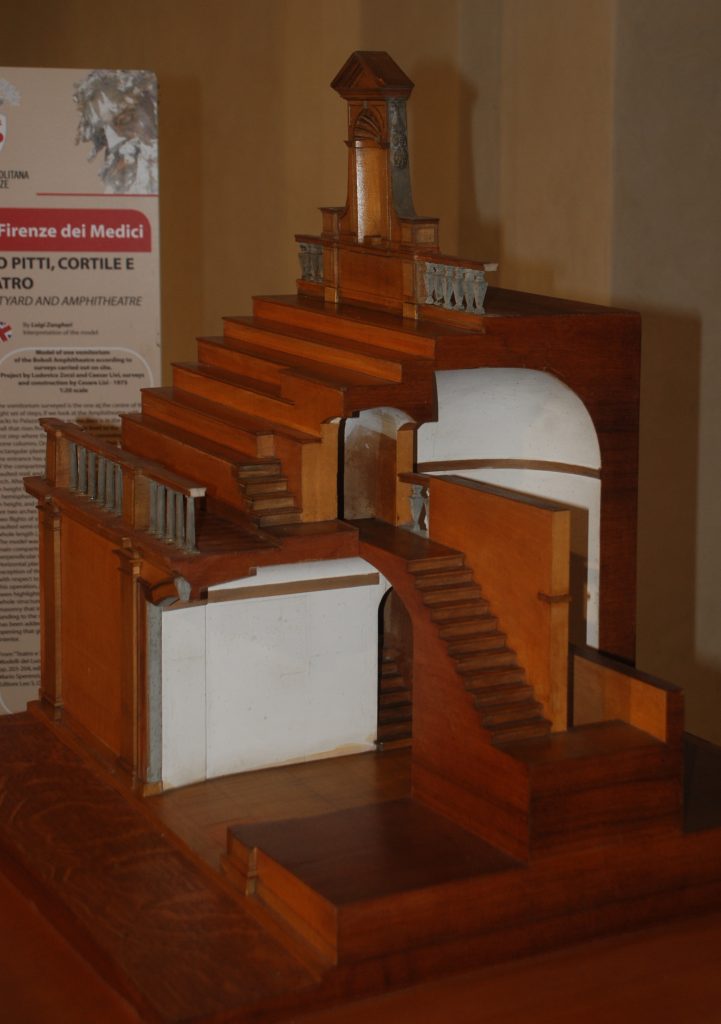
Vomitorium – Palazzo Pitti



